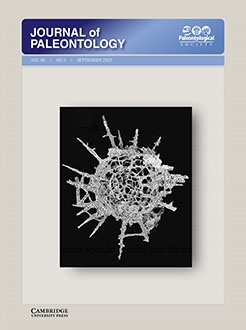The new fossil micromammal assemblage of Çapak represents a mixture of both Anatolian and European faunal elements. The locality is very important for understanding faunal evolution in the less well-known time interval at the end of the early Miocene of western Anatolia. In Çapak, nine species of rodents and one species of ochotonid were encountered: the hamsters Democricetodon gracilis, Megacricetodon primitivus, Eumyarion aff. E. montanus, Cricetodon cf. C. aliveriensis, Cricetodon sp., and Karydomys cf. K. strati, the mole-rat Debruijnia sp., the squirrel Aliveria luteyni, the dormouse Myomimus tanjuae n. sp., and the pika Albertona balkanica. The assemblage is referable to Anatolian local zone E or MN unit 4. The relative abundance of the various genera is markedly different from that of the older early Miocene assemblages, suggesting that the environment in Anatolia became drier and had a more open landscape.
How to translate text using browser tools
16 August 2021
Micromammals from the late early Miocene of Çapak (western Anatolia) herald a time of change
Melike Bilgin,
Peter Joniak,
Serdar Mayda,
Fikret Göktaş,
Pablo Peláez-Campomanes,
Lars W. van den Hoek Ostende






